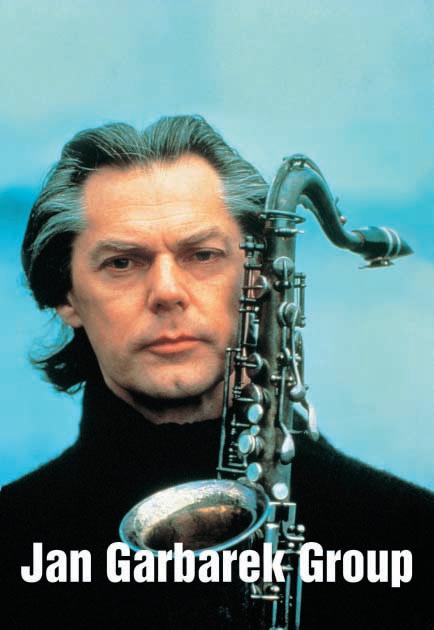
22 – 23.2.2004
香港文化中心音樂廳
Hong Kong Cultural Centre Concert Hall


22 – 23.2.2004
香港文化中心音樂廳
Hong Kong Cultural Centre Concert Hall
演出長約2小時,不設中場休息
Running time: approximately 2 hours with no interval
為了讓大家對這次演出留下美好印象,請切記在節目開始前關掉手錶、無㵟電話及傳呼機的響鬧裝 置。會場內請勿擅自攝影、錄音或錄影,亦不可飲食和吸煙,多謝合作。
To make this performance a pleasant experience for the artists and other members of the audience, PLEASE switch off your alarm watches, MOBILE PHONES and PAGERS. Eating and drinking, unauthorised photography and audio or video recording are forbidden in the auditorium. Thank you for your co-operation.
揚.葛伯瑞克組合
色士風
揚.葛伯瑞克
鋼琴/鍵盤
雷依納.布魯寧浩斯
敲擊樂
瑪莉蓮.馬素雅
低音大提琴
埃伯哈德.韋伯
Saxophones
Jan Garbarek
Piano / Keyboards
Rainer Brüninghaus
Percussion
Marilyn Mazur
Bass
Eberhard Weber
製作人員
音響
格特.偉文-芬德利希 域奇斯.芬基
燈光及佈景設計 約克.韋格納
葛伯瑞克經理人 彼德.漢恆斯
巡迴演出推廣/統籌 漢克.溫李華
音響器材由通利琴行贊助
The audio equipment is sponsored by
22.2.2004 ( 日 Sun)
演後藝人談
Production Team
Sound
Gert Rickmann-Wunderlich
Riks Finke
Lighting and Set Designer
York Wegener
Jan Garbarek’s Personal Manager
Peter Hohensee
Tour Promoter / Organiser
Henk van Leeuwen
歡迎觀眾演出後留步,與演出者見面 Meet-the-Artist (Post-Performance) You are welcome to stay behind to meet the artists after the performance
封面照片 Cover Photograph © Silvia Lelli
揚.葛伯瑞克
文:阿德里安.麥克尼爾
儘管揚.葛伯瑞克深受自由爵士樂和混合 爵士樂吸引,他的音樂總給人一種感覺 已達到過於抽象的地步,與密西西比怨曲 的風格迥然不同。 1972 年,他開始探究自 己對爵士樂的感性根源,終於在那些豐富 的挪威民謠况尋覓到。挪威音樂影響了葛 伯瑞克處理爵士樂的方式,民謠則啟發了 他多個音樂計劃,令它們超越了自由及即 興爵士樂的形式。葛伯瑞克對民謠的濃厚 興趣至今仍帶給他強烈的靈感,為他的音 樂概念提供了豐饒的土壤。
在跟不同背景的音樂家合作的經驗中,葛 伯瑞克對民謠特性的認識,令他能夠自信 地發掘少數人涉足的音樂領域。與他合作 過或一起實驗過的都是世界著名音樂家。
過去十年,葛伯瑞克將探索的對象轉向自 身的歐陸傳統上,透過專輯《禱告》以及跟 希利雅樂團合作,成功從早期歐陸音樂中 探究出色士風的即興演奏方式。
葛伯瑞克特別留意音樂中的聲音與音調, 為他贏得「音樂詩人」的美名。從豐富經驗 提煉出來的知識,令富有智慧的他相信, 「適當調整的聲音,該比熟練而充塞着音符 的獨奏更具感染力」。或許正正因為這種對 聲音的洞見,才造就出他那極為獨特而複 雜的音樂,且能廣受認同。他的音樂在音 調上純正而清晰,且具備高度表達力;表 現時異常強烈,入耳卻又簡簡單單;極之 抒情卻又可化為抽象。所有這些特色,均 令他的音樂深具魅力而獨一無二,縈繞心 窩,直達靈魂,久久不散。
全文原載於《閱藝2003》
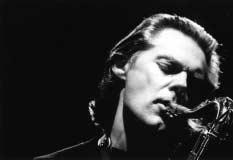
by Adrian McNeil
Even though Jan Garbarek was absorbed in both free and compositional jazz there was still the sense that his own music had reached “a stage of too many abstractions”, removed from the source of the blues of Mississippi. In 1972 he began exploring the roots of his own jazz sensibility, which he readily found in the rich tapestry of Norwegian folk music. While these Nordic sounds and styles have greatly underpinned his approach to jazz, folk music has also been the inspiration for several musical projects that lie beyond the borders of free and improvisational jazz forms. Garbarek’s abiding interest in folk music remains a strong inspiration and has provided fertile ground for his musical ideas.
In his collaborations with musicians from diverse backgrounds, his knowledge of the folk idiom has enabled him to delve confidently into less familiar musical territory. He has collaborated and experimented with renowned musicians the world over.
Turning his sense of discovery towards his own European tradition, over the last decade

Garbarek has successfully explored saxophone improvisation in early European music through his acclaimed work on the album Officium Project with the Hilliard Ensemble.
Garbarek’s own intimate relationship with musical sound and tone has led to him being described as “a poet of sound”. With the wisdom of one who has distilled knowledge through great experience, he believes that “one sound properly weighted can have more emotional impact than the slickest note-crammed solo”. Perhaps it is this insight as much as anything else that has led to the thoroughly distinctive sound that he is recognised by, and which is as unmistakable as it is complex. It can be pure and clear in tone, yet highly expressive, vehement in its expression yet simple in its realisation, lyrical yet capable of abstraction. All of this makes his music compelling and unique, something that engages heart, mind and soul.
The full version of this article first appeared in FestMag 2003
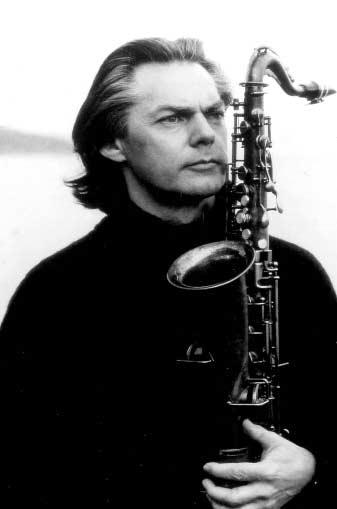
揚.葛伯瑞克
色士風
音樂聖手總有傳奇故事:揚.葛伯瑞
克十四歲時,偶爾在收音機聽到 約翰.柯川的演奏,大受感動,衝動 得馬上買了一本色士風演奏手冊,自 行學習指法 雖然當時他連圓號也 沒有一支。
從此,柯川成為葛伯瑞克的音樂模 範。在追蹤前輩宗師樂軌舊跡的過程 中,又令他接觸到新的音樂類型,如 知道了柯川對西塔印度琴大師拉菲. 尚卡的興趣,便令葛伯瑞克早在 1963 年便注意到印度音樂;又如柯川四重 奏讓這位年輕挪威樂手,細味樂隊的 活力動感,及器樂之間的內在關係。
柯川對自由爵士樂的支持,燃起他對 樂手如山德斯、亞契.謝普,特別是 阿伯特.愛勒的心儀。
二十世紀六十年代,北歐是美國樂手 的樂園,葛伯瑞克趁機一邊細聽, 一邊向各位大師,包括戴斯特.哥頓、 班.韋伯斯特及莊尼.格芬尼等人學 習。 1966 年,葛伯瑞克跟致力推廣世 界民族樂及對自由爵士樂有深遠影響 的樂手唐.傑利同台演出。不過,在 這關鍵的學習期間,當中最重要的 是,他遇上美國作曲家及鋼琴家 佐治.羅素。
1969 年,德國音樂製作人曼弗雷德. 艾徹爾正在籌組 ECM 唱片公司,邀請 葛伯瑞克為他錄製首張作品,結果, 1970 年在挪威奧斯陸錄製的《Afric Pepperbird》一鳴驚人,讓葛伯瑞克及 其隊友從此成為國際顯赫有名的樂
Jan Garbarek Saxophones
The story has acquired, through repetition, an almost legendary cast; how Jan Garbarek, at the age of 14, heard Coltrane on the radio and experienced a kind of epiphany. He immediately bought himself a saxophone instruction book and learnt fingering positions – even before he owned a horn.
Coltrane was a fortuitous choice of role model. Tracking that giant’s progress opened new paths. Knowledge of Coltrane’s interest in Ravi Shankar, for example, brought Garbarek to an awareness of Indian music as early as 1963. From the Coltrane Quartet, the young Norwegian learned about the dynamics of the band and the internal relationship of the instruments. Coltrane’s endorsement of the freest spirits of the New Thing (new sound) fired Garbarek’s appreciation of Pharoah Sanders, Archie Shepp and, especially, Albert Ayler.
During the 1960s, Scandinavia was a haven for American musicians. Garbarek grabbed opportunities to hear (and learn from) Dexter Gordon, Ben Webster and Johnny Griffin. In 1966, he had a chance to play with Don Cherry, whose embracing of world folk traditions in his unique variety of free jazz was another significant influence. However the most important influence in this formative period was his association with American composer/pianist George Russell.
In 1969, Manfred Eicher was in the process of establishing ECM Records and invited Garbarek to record for the fledgling label. Afric Pepperbird was taped in Oslo in 1970 and effectively put the saxophonist on the international map, along
手,也從此
定下了他跟 ECM 長遠的 關係,至今 合作無間。
葛伯瑞克一 直致力創 新,迅速超 越柯川的影 響,脫離美 式爵士音樂的樊籬,擴建自己的音樂 視野和境界。推出作品兩年後,他不 但從挪威的民族音樂取經,也跨越地 理及樂種限制,跟世界不同樂手合 作,包括印度小提琴手尚卡及塔北拉 雙鼓手薩克.胡申;又跟巴西的結他 手埃格伯特圖.吉斯蒙蒂及敲擊樂手 諾納.瓦斯康塞盧斯合作。當然,還 有始於 1974 年,跟爵士鋼琴手基夫. 傑瑞特的結緣,兩人一直合作至今。
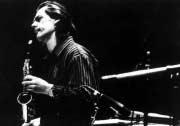
with his fellow band members. This marked the start of a long relationship between Garbarek and ECM Records, which continues to this day.
New ideas were constantly coming into play for Garbarek, who was rapidly expanding his musical horizons beyond the Coltrane influence. Within two years of his debut Garbarek was sourcing not only Norway’s folk music for inspiration, but seemingly its geography and light, while working with musicians from India (violinist Shankar and tabla player Zakir Hussain) to Brazil (guitarist Egberto Gismonti and percussionist Nana Vasconcelos). In 1974 he began his long and fruitful association with Keith Jarrett.
葛伯瑞克音樂涉獵廣闊,也勇於在爵 士樂中開闢新路向,如同屬 ECM 品牌 的希臘作曲家伊蓮尼.克蘭卓勞(曾推 出《電影音樂》專輯)為葛伯瑞克的色士 風演奏寫曲。此外,跟希利雅樂團合 作的《禱告》,也是很好的越界合作, 互放光亮的例子。葛伯瑞克 1999 年推 出專輯《儀式》,2003 年負責《普遍切分 法》的色士風部份,其他參與樂手包括 米路史拉夫.維托斯、奇克.柯利亞 以及傑克.德約翰尼特。
葛伯瑞克一向看重即興演奏的音樂價 值,樂此不疲地追求剔透的音色、 空靈的音域,是當今最重要的演奏家 之一。
Garbarek’s wide-ranging listening habits and his willingness to confront new challenges has kept his music at the exploratory edge of jazz. He has collaborated with the classical music group, the Hilliard Ensemble, on Officium Project and Greek composer, Eleni Karaindrou, writes music to incorporate Garbarek’s saxophones. In 1999 Garbarek released his album Rites and participated on Universal Syncopations with Miroslav Vitous, Chick Corea, John McLaughlin and Jack DeJohnette in 2003.
More than any other saxophonist playing today, Garbarek has established values for improvisation in which sensitivity to tone and space are of crucial importance.
雷依納.布魯寧浩斯
鋼琴/ 鍵盤
雷依納.布魯寧浩斯 1949 年出生,十 一歲開始學習古典鋼琴,雖然十七歲 已鍾情爵士即興演奏,但一直沒有放 棄古典音樂。
布魯寧浩斯 1973 年在科隆大學社會 系畢業後,決定成為專業樂手,並加 入結他手克里格爾帶領的樂團 「Spektrum 」及法蘭克福電台爵士樂 團,後獲埃伯哈德.韋伯邀請於其首 張大碟《克洛伊的色彩》中演奏(此專輯 共獲得兩項德國格林美獎項),也因二 人音樂志趣相投,促成了韋伯在 1975 年組成樂隊「色彩」。
布魯寧浩斯曾夥拍不同樂手,如敲擊 樂手亞伯.曼格斯朵夫、挪威女歌手 凱倫.克羅格及爵士口琴樂手托玆. 席爾曼斯等等。布魯寧浩斯也曾跟德 國組合曼弗雷德.蕭夫五重奏巡迴演 出及灌錄唱片,以及在Kemscheid 爵士 學院及科隆音樂學院教授爵士鋼琴, 1988 年起加入揚.葛伯瑞克組合。
Piano/Keyboards
Rainer Brüninghaus was born in 1949 and began his intensive study of the classical piano in 1960. By 1966 he had developed a taste for jazz improvisation, which he played concurrently with his classical repertoire.
After receiving a degree in sociology at Cologne University in 1973, Brüninghaus decided to work as a professional musician and joined the band of guitar player Volker Kriegel (Spektrum) as well as the jazz ensemble, “Hessischer Rundfunk” (Radio Frankfurt). Eberhard Weber invited Brüninghaus to play on his first album, The Colours of Chloe (later to be awarded with two German Grammies) and their musical understanding and collaboration led to the formation of Eberhard Weber’s group Colours in 1975.
Brüninghaus has played with Albert Mangelsdorff, Karin Krog and Toots Thielemans among others as well as toured and recorded with Manfred Schoof’s Quintet. He has tutored jazz piano at the Kemscheid Jazz Academy and the Cologne Conservatory. Brüninghaus has been a member of the Jan Garbarek Group since 1988.
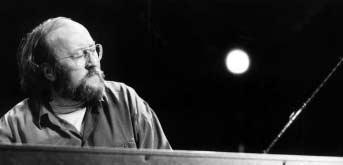
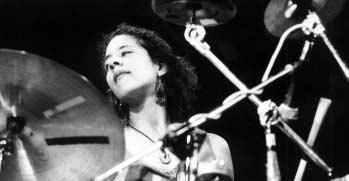
瑪莉蓮.馬素雅 敲擊樂
1955 年出生的作曲家及敲擊樂手瑪莉 蓮.馬素雅,活躍世界樂壇逾廿五 載,曾在世界各地演奏不同的音樂。
馬素雅現居於哥本哈根,在當地主領 不少樂團及音樂項目。最初擔任鋼琴 手及舞者,後來轉為鼓手及樂隊領 班,一直至今。她創作不斷,別有格 調,為自己的組合「未來歌曲」寫曲及 演奏,亦跟很多當今一級樂手樂團合 作,如麥爾斯.戴維斯樂團、韋恩. 蕭特五重奏及吉爾.艾雲斯樂團。
1991 年起加入揚.葛伯瑞克組合。
馬素雅曾獲獎無數,如 1983 年獲得 本.韋伯斯特獎,又先後於 1998 及 1999 年獲提名國際爵士樂大獎,並於 2000 年獲頒該獎。 1999 年,她到畿內 亞首都康納克雷的第一屆敲擊樂雙年 節演出,跟畿內亞祖利巴芭蕾舞團成 員合作。
Born in 1955, composer and percussionist, Marilyn Mazur has played all over the world in a wide range of musical contexts. She began her performing career as a pianist and dancer and now primarily works as a drummer and bandleader. During her musical career she has played with some of the great musical groups including the Miles Davis Group, Wayne Shorter Quintet and the Gil Evans Orchestra. She has been a member of the Jan Garbarek Group since 1991.
Based in Copenhagen, she has led many groups and projects through the more than 25 years of her musical career. Today much of her work is focused on writing for and playing with her own group ‘Future Song’.
Mazur has received many awards and honours for her work. She was awarded the Ben Webster Award in 1983, was nominated for the international Jazzpar Prize in 1998 and 1999 and won the Prize in 2000. In 1999 she played at the first Biennale de Percussions in Conakry, Guinea, with members of the Guinea Ballet Joliba.
埃伯哈德.韋伯 低音大提琴
埃伯哈德.韋伯 1940 年 於德國史圖加出生,身 兼低音大提琴家、大提 琴家及作曲家多個身 份。埃伯哈德.韋伯曾 任錄音樂師,擅玩豐富 多樣的音樂風格,然 而,他喜歡的卻是較受 古典樂風影響、較有感 染力的音樂。
他使用的是一種自創的 「電子低音大提琴」 (electrobass) 的樂器。它 前身是一種古老意大利 電子低音大提琴,頸身 很長,共鳴箱是個細小的長方體,韋 伯在上面加上第五條弦線,讓它看起 來像一個有形有格的無身原聲低音大 提琴,產生更沉厚的泛音,音間靈 遠,感染力更強,最適合增強感情起 伏效果。之後,韋伯再加上第六條 弦線。

Bass
Bassist, cellist and composer Eberhard Weber was born in Stuttgart, Germany, in 1940. He has worked as a session musician in various musical genres though his interest was more in atmospheric, classicallyinfluenced music.
He has developed a unique instrument, the “electrobass” (his term), by redesigning an old Italian electric bass with a long neck and small rectangular sound box and adding a fifth string. The instrument looks like a funky bodiless acoustic double bass which can sustain deeper, more spacious overtones and has a more evocative lyrical sound, very well suited for melodic emphasis. He later added yet another string.
韋伯 1973 年加入 ECM ,憑此創新的聲 音錄製了首張個人演奏專輯《克洛伊的 色彩》,並於1975 年取得西德聲樂學院 首獎,韋伯亦被選為全年最佳樂手。 他被公認為爵士低音大提琴演奏的先 鋒,為表達力強但頗受忽視的樂器, 開展新的可能,邁向更遼闊的音樂 領域。
1975 年,韋伯組成了深具影響力的「色 彩」樂隊,1982 年解散後,加入揚.葛 伯瑞克組合。 1975 至 1987 年間,韋伯 是聯合爵士及搖滾樂樂團的成員。
場刊中譯:俞若玫
With this new sound he recorded his first solo album, The Colours of Chloe, in 1973 and in 1975 won first prize at the West German PhonoAkademie. Weber was also voted “Artist of the Year”. He is regarded as a pioneer in jazz bass playing opening up new dimensional possibilities for this highly-expressive, yet underutilized instrument.
In 1975 he formed the influential group Colours which disbanded in 1982 and from there went on to join the Jan Garbarek Group. He was a member of the United Jazz and Rock Ensemble from 1975-87.